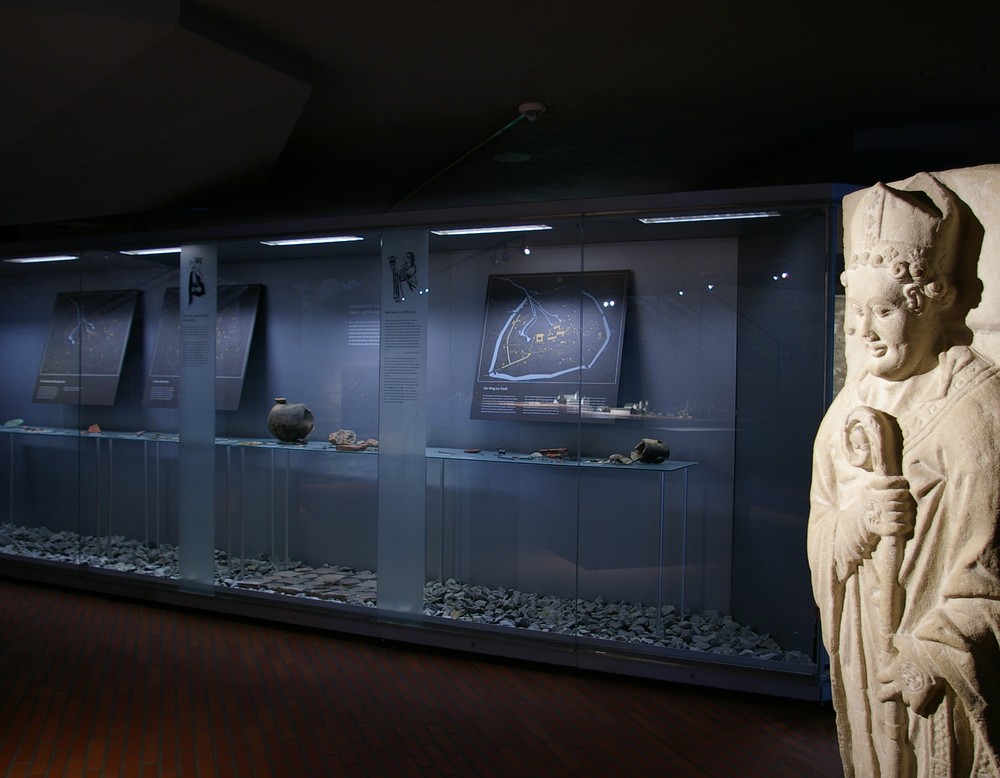
The archaeological exhibition - time travel within historic walls
Of emperors and royal splendor
How did Charlemagne and his successors live in Paderborn? Why did they build palaces in which they did not live permanently?
The permanent exhibition focuses on the historical walls of the museum and shows what prestigious buildings looked like in the early and high Middle Ages. Together with the cathedral, the imperial palace was not only the first, but for a long time also the only stone building in the area. The Carolingian finds from Charlemagne's palace show how the traveling king and his entourage lived during their stays in Paderborn: Jewelry, valuable tableware and tools, as well as glazed windows and colorful wall paintings, bear witness to the former splendor of the king's court.
From the Palatinate to the medieval city
Bishop Meinwerk (975 -1036) is considered the second founder of Paderborn after Charlemagne.
Shortly after his consecration as bishop in 1009, the Paderborn dignitary initiated numerous building projects. He had the cathedral restored and rebuilt the palace. The lively building activities are also reflected in the finds from the building sites of the late 10th and 11th centuries.






